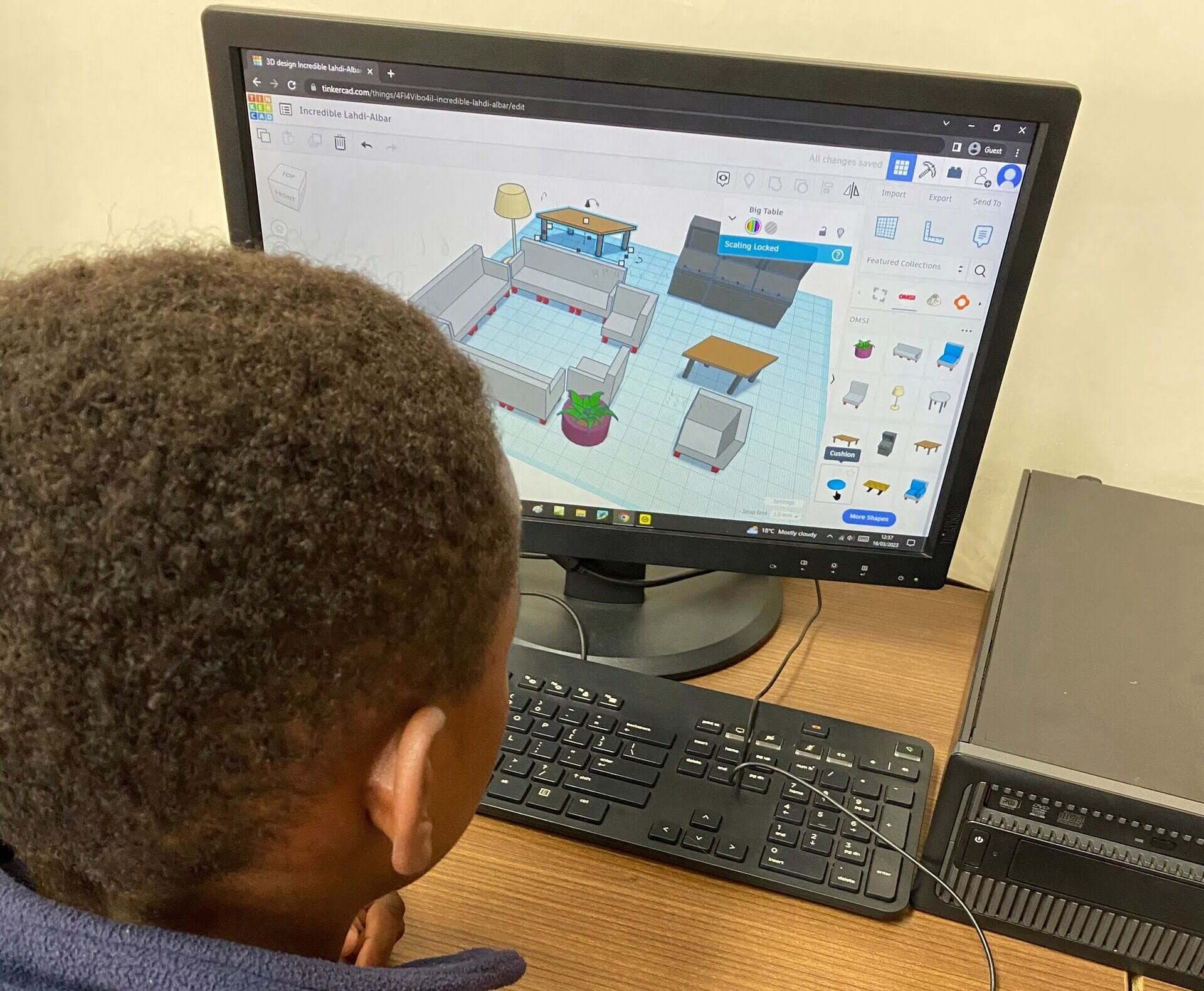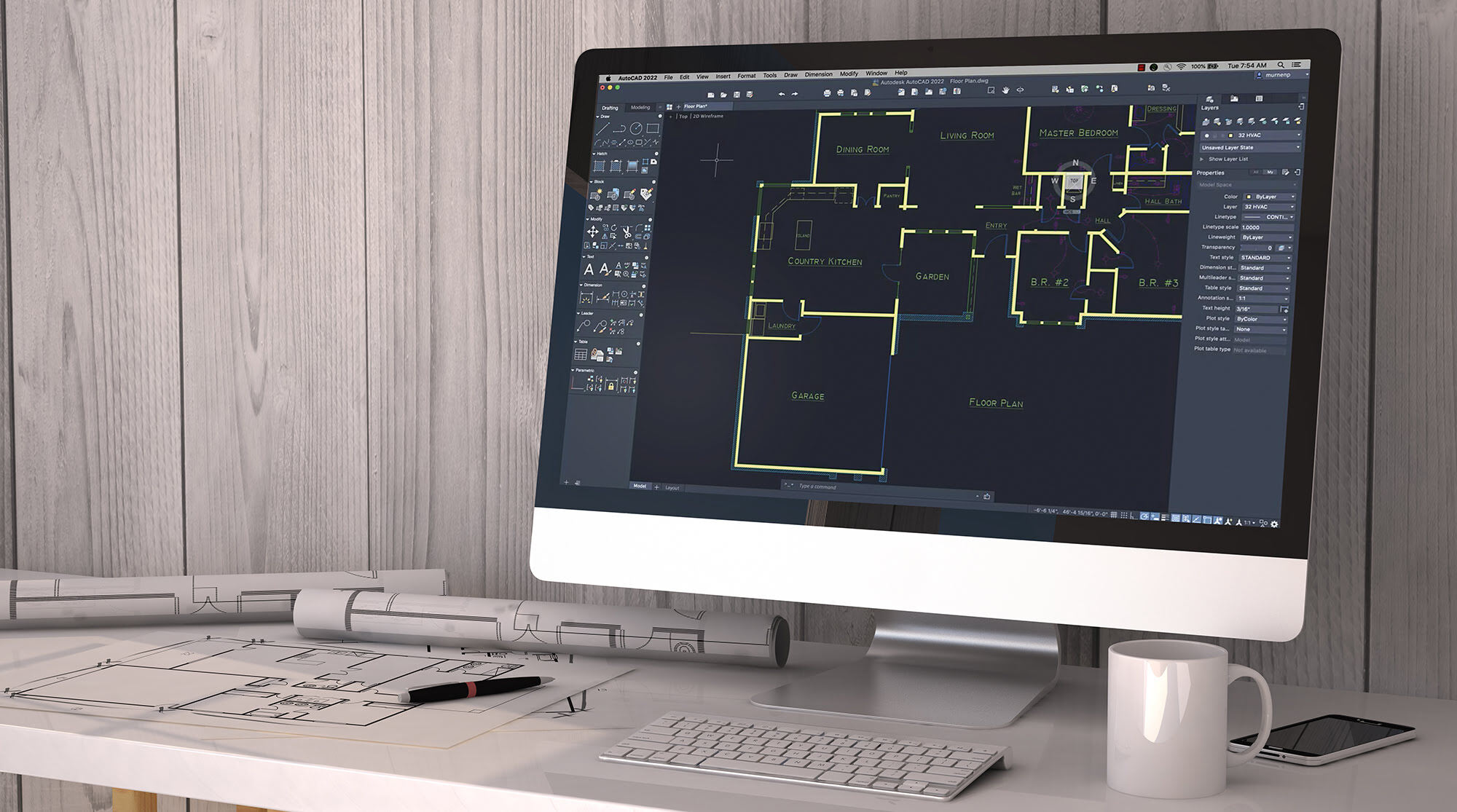Home>diy>Architecture & Design>What Does CAD Mean In TinkerCAD


Architecture & Design
What Does CAD Mean In TinkerCAD
Modified: January 9, 2024
Discover what CAD means in TinkerCAD and explore its importance in architecture design. Unleash your creativity with this powerful digital tool.
(Many of the links in this article redirect to a specific reviewed product. Your purchase of these products through affiliate links helps to generate commission for Storables.com, at no extra cost. Learn more)
Introduction
Welcome to the exciting world of computer-aided design (CAD) and its application in TinkerCAD. As technology continues to evolve at a rapid pace, architects, designers, engineers, and hobbyists are turning to CAD software to streamline their design processes and bring their visions to life.
In this article, we will delve into the fascinating realm of CAD and explore its significance in TinkerCAD. We’ll discuss the fundamentals of CAD, provide an overview of the TinkerCAD platform, delve into its key features, and shed light on how CAD works within TinkerCAD.
So, whether you’re new to CAD or are already familiar with the concept, get ready for an engaging journey as we examine the ins and outs of CAD in TinkerCAD.
Key Takeaways:
- TinkerCAD offers a user-friendly platform for CAD, empowering beginners to create 3D models with ease and explore the world of 3D printing.
- While TinkerCAD simplifies CAD for beginners, it may have limitations for advanced users, such as complex modeling and advanced simulation needs.
Read more: What Does CAD Mean?
Understanding CAD
Before diving into the specifics of CAD in TinkerCAD, let’s first gain a clear understanding of what CAD actually is. CAD, or computer-aided design, is a technology that allows designers, architects, and engineers to create, modify, and analyze digital models of physical objects.
CAD software replaces traditional manual drafting methods, such as pencil and paper, with digital tools that offer a multitude of benefits. Through CAD, designers can easily and accurately visualize their designs, make modifications in real-time, and simulate various scenarios to test the functionality and feasibility of their creations.
CAD platforms provide an extensive range of tools and functionalities to assist in the design process. These tools include 2D drawing tools for creating precise sketches, 3D modeling tools for shaping and manipulating objects, and simulation tools for analyzing the performance and behavior of the designed models.
By using CAD software, designers can save time and effort, reduce the chances of errors or inaccuracies, and iterate on their designs more efficiently. Furthermore, CAD models can easily be shared, edited, and replicated, fostering collaboration and enabling designers to bring their ideas to reality with greater speed and precision.
Now that we have a solid grasp of CAD, let’s move on to exploring TinkerCAD and its role in the world of computer-aided design.
Overview of TinkerCAD
TinkerCAD is a popular web-based CAD software developed by Autodesk. It is widely recognized for its user-friendly interface, making it an ideal choice for beginners and those new to CAD. TinkerCAD provides a simplified approach to CAD, allowing users to quickly create 3D models without requiring extensive technical knowledge or experience.
One of the notable aspects of TinkerCAD is its accessibility. Being a web-based application, TinkerCAD can be accessed from any computer with an internet connection, eliminating the need for complex installations or high-performance hardware.
TinkerCAD offers a range of design tools and features that allow users to create complex and intricate 3D models. It provides a library of pre-designed shapes, including basic geometric forms like cubes, spheres, and cylinders, as well as more specialized shapes that can be customized and combined to create unique designs.
Beyond its robust design capabilities, TinkerCAD also offers features like grouping and aligning objects, adjusting dimensions, and adding decorative elements to enhance the visual appeal of models. Additionally, TinkerCAD allows users to import and export their designs in various formats, facilitating seamless integration with other CAD software and 3D printing applications.
One of the standout features of TinkerCAD is its integration with 3D printing. TinkerCAD provides seamless connectivity to popular 3D printers, allowing users to effortlessly bring their designs to life. This integration makes TinkerCAD an excellent choice for those interested in exploring the world of 3D printing and manufacturing.
With its intuitive interface and versatile features, TinkerCAD has become a go-to CAD tool for educational institutions, hobbyists, and individuals looking to explore their creativity through 3D modeling and design.
Now that we have familiarized ourselves with TinkerCAD, let’s delve into its key features and understand how CAD works within this platform.
Key Features of TinkerCAD
TinkerCAD offers a range of powerful features that make it a versatile and user-friendly CAD software. Let’s take a closer look at some of its key features:
- Easy-to-use Interface: TinkerCAD boasts a user-friendly interface that makes it accessible to beginners and experienced users alike. Its intuitive drag-and-drop design tools and visual controls make it easy to navigate and create 3D models.
- Shape Generator: TinkerCAD offers a unique shape generator feature that allows users to create complex shapes and structures by adjusting parameters such as size, angles, and proportions. This feature enables users to explore countless design possibilities.
- Customizable Library of Shapes: TinkerCAD provides a library of pre-designed shapes that can be easily customized to fit specific design requirements. Users can modify dimensions, colors, and orientations to create unique and personalized models.
- Grouping and Manipulation: TinkerCAD allows users to group objects together, making it easier to manipulate and edit multiple elements simultaneously. This feature simplifies complex designs and enables efficient modifications.
- Alignment and Measurement Tools: TinkerCAD offers alignment and measurement tools that aid in precise positioning and accurate dimensions. This ensures that designs meet specific requirements and allows for seamless integration with other CAD software or 3D printing applications.
- Collaboration and Sharing: TinkerCAD enables users to collaborate and share their designs with others. Users can invite colleagues or friends to view and edit their projects, fostering teamwork and creativity.
- Integration with 3D Printing: TinkerCAD has seamless integration with popular 3D printers, allowing users to directly export their designs for 3D printing. This feature streamlines the prototyping and manufacturing process for those exploring the world of 3D printing.
- Community and Learning Resources: TinkerCAD provides a vibrant community of users, where individuals can share their designs, seek feedback, and collaborate. Additionally, TinkerCAD offers a variety of learning resources, including tutorials, videos, and projects, to help users enhance their CAD skills.
These features, coupled with TinkerCAD’s user-friendly interface, make it an excellent choice for individuals of all skill levels to bring their creative ideas to life and explore the endless possibilities of 3D modeling and design.
Now that we have explored the key features of TinkerCAD, let’s move on to understanding how CAD works within this innovative platform.
CAD stands for Computer-Aided Design. It is the use of computer software to create, modify, analyze, or optimize a design. In TinkerCAD, CAD is used to design 3D models for 3D printing or other digital fabrication processes.
How CAD Works in TinkerCAD
In TinkerCAD, CAD works by providing a set of intuitive tools and functionalities that allow users to create, modify, and manipulate 3D models. Here’s a breakdown of how CAD works within the TinkerCAD platform:
1. Design Creation: To start a design in TinkerCAD, users can select basic shapes from the library or import custom shapes. These shapes serve as a foundation for the design and can be combined, resized, and positioned to create more complex structures.
2. Object Manipulation: TinkerCAD provides intuitive tools to manipulate objects. Users can rotate, scale, and move objects in 3D space, allowing for precise positioning and alignment. This feature enables users to create intricate and detailed designs with ease.
3. Customization: TinkerCAD allows users to customize shapes by adjusting their dimensions, colors, and orientations. This customization feature lets designers create unique and personalized models that suit their specific requirements and creative vision.
4. Grouping and Combining: Users can group objects together, streamlining the design process and making it easier to manipulate and edit multiple elements simultaneously. By combining objects, users can create complex structures or intricate patterns with just a few clicks.
5. Measurement and Alignment: TinkerCAD offers measurement and alignment tools to ensure accurate dimensions and precise positioning. Users can easily measure distances, angles, and sizes of objects, helping them maintain consistency and meet specific design requirements.
6. Simulation and Testing: TinkerCAD allows users to simulate and test the functionality and behavior of their designs. By adding features like movable joints or kinetic objects, designers can verify if their creations work as intended or make necessary adjustments to enhance functionality.
7. Export and 3D Printing: Once the design is finalized, TinkerCAD provides seamless integration with 3D printing. Users can export their designs in various file formats compatible with 3D printers, allowing them to bring their creations to life through additive manufacturing.
By harnessing the power of CAD tools and features provided by TinkerCAD, users can unleash their creativity and bring their ideas to life in a virtual 3D environment.
Now that we have explored how CAD works in TinkerCAD, let’s move on to understanding the benefits of using CAD in this platform.
Read more: What Does CAD Mean In Technology
Benefits of Using CAD in TinkerCAD
Using CAD in TinkerCAD offers a multitude of benefits for designers, architects, engineers, and hobbyists. Here are some key advantages of leveraging CAD in the TinkerCAD platform:
- Ease of Use: TinkerCAD provides a user-friendly interface, making it accessible to beginners and individuals with limited CAD experience. Its intuitive design tools and drag-and-drop features allow users to quickly create and modify 3D models.
- Time and Effort-Saving: CAD software streamlines the design process, reducing the time and effort required for manual drafting. With TinkerCAD, designers can make changes to their designs in real-time, eliminating the need for extensive erasing, redrawing, and reworking.
- Accuracy and Precision: CAD software ensures precise measurements and accurate design representations. TinkerCAD’s measurement tools and alignment features enable users to maintain consistency and adhere to specific dimensions, resulting in high-quality and professional-looking designs.
- Visualization and Realistic Simulation: CAD allows designers to visualize their ideas in a virtual 3D environment. TinkerCAD provides simulation tools that enable users to test the functionality and behavior of their designs. This feature allows for better decision-making and design optimization.
- Flexibility and Iteration: CAD provides the flexibility to experiment and iterate on designs easily. TinkerCAD’s ability to resize, reshape, and combine objects allows users to explore multiple design variations without starting from scratch, fostering creativity and innovation.
- Collaboration and Sharing: TinkerCAD offers collaboration features that facilitate teamwork and idea sharing. Users can invite others to view and edit their designs, allowing for seamless collaboration and feedback exchange.
- Seamless Integration with 3D Printing: TinkerCAD’s integration with 3D printing simplifies the process of bringing designs to the physical world. Users can directly export their TinkerCAD designs to compatible 3D printers, allowing for rapid prototyping and manufacturing.
- Learning and Exploration: TinkerCAD provides a wealth of learning resources and a vibrant community. Users can access tutorials, videos, and projects to enhance their CAD skills and gain inspiration from others’ designs, promoting continuous learning and growth.
By leveraging CAD in TinkerCAD, designers can enhance their productivity, improve design accuracy, and foster innovation. The platform’s user-friendly interface and range of features make it an excellent choice for individuals looking to explore the world of CAD and 3D modeling.
Now let’s explore the limitations that users may encounter when using CAD in TinkerCAD.
Limitations of CAD in TinkerCAD
While TinkerCAD offers a user-friendly and versatile CAD platform, there are some limitations to consider. Understanding these limitations can help users make informed decisions about their design workflows. Here are a few key limitations of CAD in TinkerCAD:
- Complexity: TinkerCAD is designed to be beginner-friendly and lacks some advanced features found in more complex CAD software. As a result, it may not be ideal for handling highly intricate or detailed designs that require advanced modeling techniques.
- Limited Modeling Capabilities: While TinkerCAD offers a wide range of tools and shapes, its modeling capabilities may not match those of professional-grade CAD software. Users may find limitations when dealing with complex geometries, parametric modeling, or advanced surfacing.
- File Size Restrictions: TinkerCAD imposes limitations on the maximum file size that users can work with. This can pose challenges for larger and more complex designs, potentially requiring users to simplify or break down their designs into smaller components.
- Advanced Simulation and Analysis: TinkerCAD’s simulation capabilities are limited compared to dedicated simulation software. Users may not have access to advanced analysis tools for testing factors like stress, thermal behavior, or fluid dynamics in their designs.
- Dependency on Internet Access: TinkerCAD is a web-based platform that requires a stable internet connection to access and use. Users may face limitations or interruptions if they have unreliable or limited internet connectivity.
- Limited Export Formats: While TinkerCAD supports exporting designs in various formats, the available options may not cover all specific requirements or be compatible with certain CAD or 3D printing software. Users may need to convert or adjust exported files to fit their desired workflow.
- Security and Data Control: Since TinkerCAD is a cloud-based platform, users must consider data security and privacy concerns. Design files and intellectual property are stored and accessed through Autodesk’s servers, which may not be suitable for individuals or organizations with strict data control requirements.
Despite these limitations, TinkerCAD remains a powerful and accessible CAD tool that caters to a wide range of users, especially beginners and hobbyists. It offers a solid foundation for learning CAD principles and exploring 3D modeling.
Now that we have examined the limitations, let’s summarize the key points covered in this article.
Conclusion
In conclusion, TinkerCAD provides a user-friendly and accessible platform for computer-aided design (CAD), enabling users to create, modify, and visualize 3D models. By leveraging CAD in TinkerCAD, designers, architects, engineers, and hobbyists can enjoy numerous benefits such as ease of use, time savings, accuracy, and flexibility.
TinkerCAD’s intuitive interface and range of features make it an ideal choice for beginners or individuals with limited CAD experience. The shape generator, customizable library of shapes, grouping and manipulation tools, and measurement and alignment features empower users to bring their creative ideas to life with precision and efficiency. TinkerCAD’s integration with 3D printing further expands its capabilities, allowing users to seamlessly transition from digital design to physical objects.
However, it’s important to recognize the limitations of TinkerCAD. The platform may not cater to advanced modeling needs, complex designs, or advanced simulation and analysis requirements. File size restrictions, dependency on internet access, limited export formats, and data control considerations are factors to consider as well.
Despite these limitations, TinkerCAD remains a powerful CAD tool for beginners, educators, and hobbyists, offering a stepping stone into the world of 3D modeling and design. TinkerCAD’s emphasis on simplicity and accessibility, coupled with its integration with 3D printing, makes it an attractive choice for those looking to explore their creativity and transform their ideas into physical objects.
Whether you’re an aspiring designer, an educator fostering creative learning, or a hobbyist exploring the possibilities of 3D modeling, TinkerCAD provides an excellent platform to bring your ideas to life and embark on your CAD journey.
Frequently Asked Questions about What Does CAD Mean In TinkerCAD
Was this page helpful?
At Storables.com, we guarantee accurate and reliable information. Our content, validated by Expert Board Contributors, is crafted following stringent Editorial Policies. We're committed to providing you with well-researched, expert-backed insights for all your informational needs.















0 thoughts on “What Does CAD Mean In TinkerCAD”